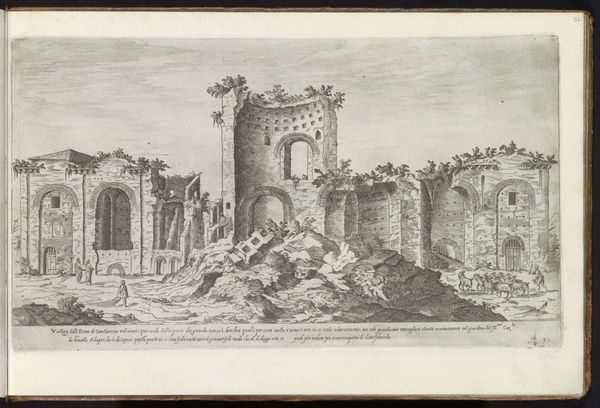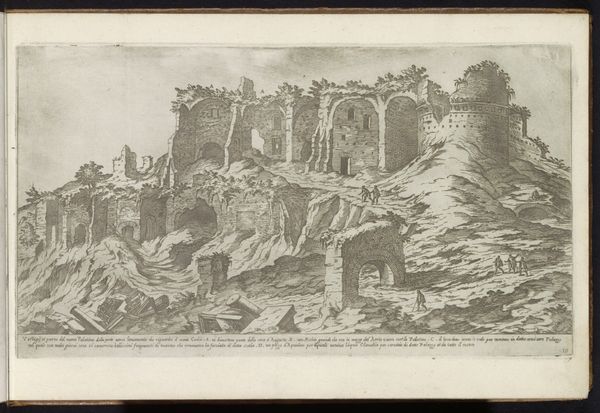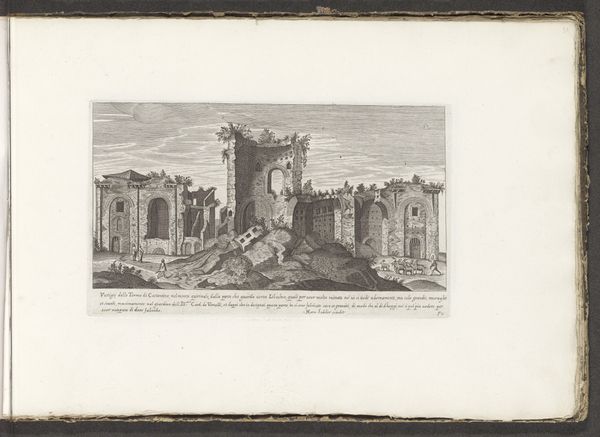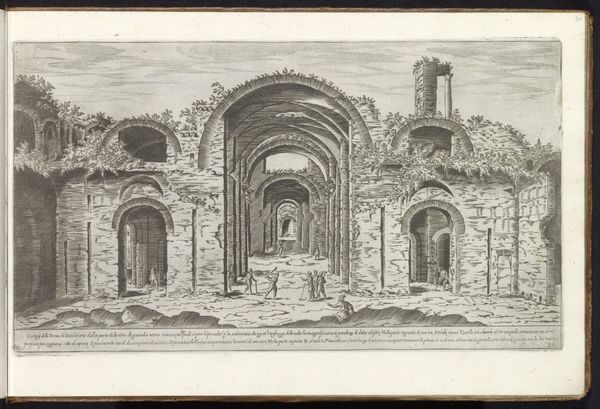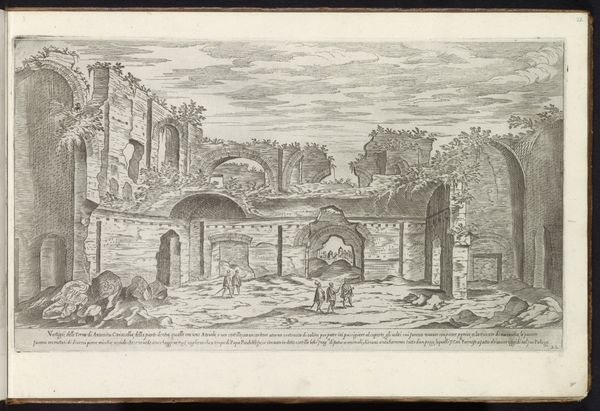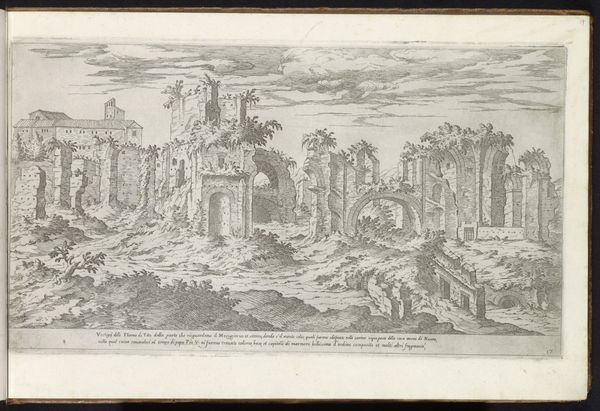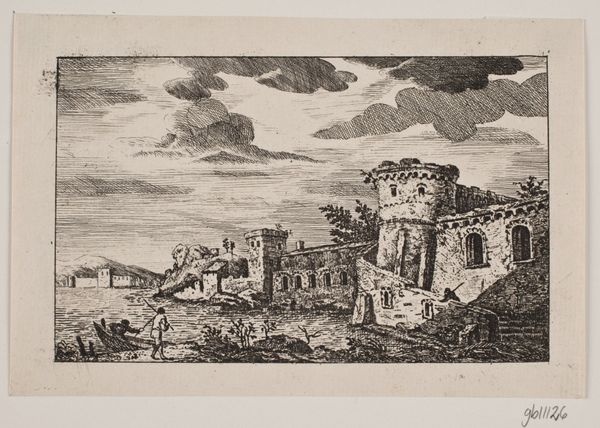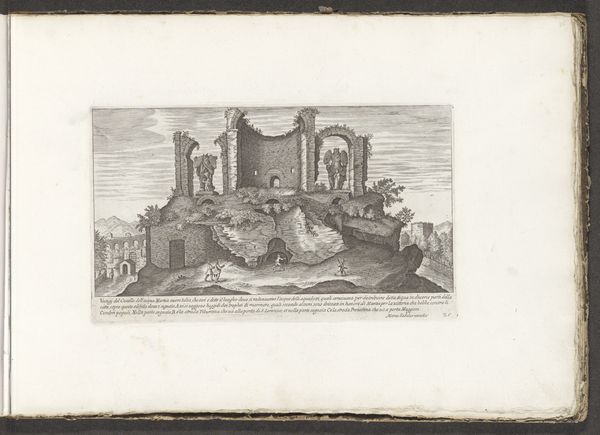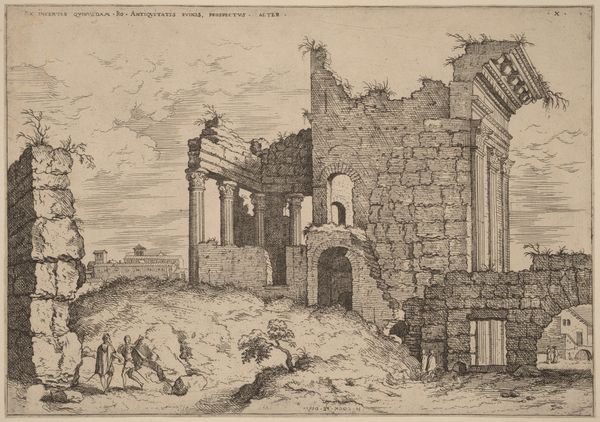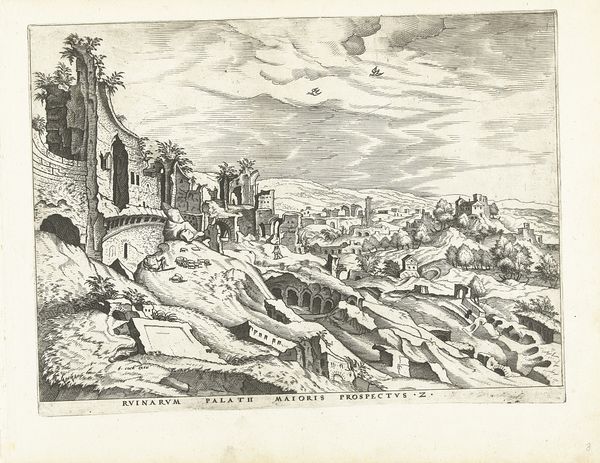
drawing, print, etching, ink, engraving
#
drawing
#
toned paper
#
ink drawing
# print
#
pen sketch
#
etching
#
pencil sketch
#
landscape
#
11_renaissance
#
personal sketchbook
#
ink
#
ink drawing experimentation
#
pen-ink sketch
#
pen work
#
sketchbook drawing
#
history-painting
#
sketchbook art
#
engraving
Dimensions: height 216 mm, width 381 mm
Copyright: Rijks Museum: Open Domain
Curator: This etching, created around 1575 by Étienne Dupérac, is entitled "Ruïnes van de Trofeeën van Marius te Rome," or "Ruins of the Trophies of Marius in Rome." Editor: It's… quite striking, actually. The ruined structure dominates the composition, evoking a feeling of historical decay but also resilience. The intricate details achieved with ink is impressive. Curator: Dupérac, of course, was meticulous in his renderings. Prints like this one offered views of Rome that helped shape the image of the city across Europe, making him central to the city’s public reception. Considering the material—engraving and etching—the means of production allowed for multiple impressions and wider dissemination. Editor: Absolutely. It also implies the existence of a market for such images—patrons wanting to take a piece of Rome back with them, even if only in representation. Do you think the print’s function as a kind of souvenir influenced the style? Curator: Undeniably. The composition emphasizes a picturesque, easily legible ruin, almost theatrical. It makes the past accessible and engaging for a broader audience. But it’s also vital to consider who that audience was. Prints like this helped to consolidate certain visions of Rome. Editor: So the act of representing, of making this image reproducible, becomes a political act itself? What’s included, what's omitted, is incredibly meaningful when placed within the context of Rome's power dynamics. Curator: Precisely! And if we look at the quality of the paper used, and the precise nature of the ink itself, it tells us volumes about the art market that made this image a product. What do you think we should emphasize to the visitors, knowing the themes? Editor: I would suggest guiding them to consider this print not merely as a landscape, but as a material artifact that speaks volumes about cultural values, about power, and the marketplace of imagery in Renaissance Europe. Curator: An excellent suggestion. I'm really fascinated how we can contextualize an image of ruins and reconstruct its influence.
Comments
No comments
Be the first to comment and join the conversation on the ultimate creative platform.
